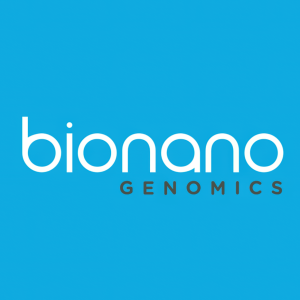International Consortium Publishes Comprehensive Roadmap for the Clinical Implementation of OGM in Hematological Malignancy Applications
- Framework was co-authored by an international consortium made up of 18 cancer researchers
- Publication includes researchers’ recommendations for laboratories planning to adopt optical genome mapping (OGM) on topics including assay development, clinical validation, implementation, algorithms for data interpretation, and strategies for efficient reporting
- Bionano Laboratories developed its laboratory developed test (LDT), marketed as OGM-Dx™ HemeOne, based on the process outlined in this publication
SAN DIEGO, Jan. 03, 2024 (GLOBE NEWSWIRE) -- Bionano Laboratories, a laboratory services business of Bionano Genomics, Inc. (Nasdaq: BNGO), today announced the publication of the first framework paper for the clinical adoption and implementation of the optical genome mapping (OGM) workflow for hematological malignancy applications, a process utilized by Bionano Laboratories in the development of its laboratory developed test (LDT), marketed as OGM-Dx™ HemeOne. The framework, which was co-authored by an international consortium of 18 researchers from institutions including University of Toronto, University Health Network, Columbia University Irving Medical Center, Augusta University, Greenwood Genetic Center, the University of Texas MD Anderson Cancer Center, Hospital Del Mar Barcelona, Hospital Del Mar Research Institute (IMIM), Radboud University Medical Center, University of Oulu, University Hospitals Leuven, Universitat Autònoma de Barcelona, and Children’s Hospital Los Angeles, is intended to help laboratories with the uniform adoption and implementation of an OGM workflow.
In the publication, the authors note that many recent peer-reviewed papers have validated OGM’s potential to contribute to the analysis of hematological malignancies, highlighting its reported high levels of concordance with traditional cytogenetic methods, its ability to detect novel structural variants (SVs) missed by those methods, and its ability to contribute to a more complete and thorough understanding of relevant hematologic biomarkers. The authors believe that a proactive approach to the development of standards would be beneficial for global laboratories’ understanding of how best to use an OGM workflow.
Consortium members collaboratively outlined a consensus framework designed to provide guidance to laboratories interested in the adoption and implementation of OGM. The authors covered considerations that need to be addressed when incorporating OGM into a laboratory, including assessment of clinical utility, proof of principle study, method validation, clinical validation, and implementation. The framework addresses these considerations with specific recommendations in three areas: validation, quality control, and analysis and interpretation of variants. Through the publication, the authors stated that their primary purpose is to assist laboratories with a more uniform implementation of OGM in hematologic malignancies with the aim of achieving globally accepted standards.
Dr. Adam Smith, a researcher at the University of Toronto and the framework’s senior author, stated, “I recognized immediately when we started evaluating optical genome mapping in 2021 that having a consensus about the best methods to validate the test and interpret the results were going to be critical for widespread adoption. New genetic tests, often due to their complexity, are developed in many laboratories simultaneously leading to several bespoke implementations. Guidelines and best practices are often published by professional societies years after a technology has been widely adopted, leaving a gap where many laboratories struggle alone to develop new technologies. We established the international consortium very early in our development and with the help of other early adopters from around the world to develop a consensus set of recommendations for development and interpretation of OGM, not only for the members of the consortium, but for all members of the cytogenomic community that want to use OGM.”
“Bionano Laboratories has successfully developed an OGM-based laboratory developed test (LDT) for hematological malignancy applications based on the process covered in this publication. We are pleased that this international consortium has outlined a roadmap for other laboratories to follow as they implement OGM, potentially eliminating disparities in patient testing outcomes,” commented Justin Leighton, vice president of laboratory business at Bionano Laboratories. “We believe this publication may be an important first step toward building a consensus statement for the incorporation of OGM into medical society guidelines for the analysis of blood cancers.”
The publication can be viewed here.
About Bionano Laboratories:
Bionano Laboratories provides access to genetic answers and support utilizing cutting-edge technologies to advance the way you see the genome. Our clinical services offer a genetic testing experience that combines a comprehensive testing portfolio with thoughtful and accessible support options for the diagnostic journey. Bionano Laboratories also offers direct access to optical genome mapping for applications across basic, translational and clinical research. For more information, visit www.bionanolaboratories.com
Forward-Looking Statements of Bionano Genomics
This press release contains forward-looking statements within the meaning of the Private Securities Litigation Reform Act of 1995. Words such as “believe,” “can,” “may,” “potential,” “will,” and similar expressions (as well as other words or expressions referencing future events, conditions or circumstances) convey uncertainty of future events or outcomes and are intended to identify these forward-looking statements. Forward-looking statements include statements regarding our intentions, beliefs, projections, outlook, analyses or current expectations concerning, among other things, the ability and utility of the OGM-Dx™ HemeOne LDT for the diagnostic and prognostic utility in individuals with a new or an existing diagnosis of a hematological malignancy; the ability and utility of OGM to product results that are highly concordant with traditional cytogenetic techniques; the ability and utility of OGM to detect novel structural variants (SVs) missed by traditional cytogenetic techniques; the ability and utility of OGM to contribute to a more complete and thorough understanding of relevant hematologic biomarkers; the ability and utility of the framework described in the publication referenced in this press release to assist laboratories with a more uniform implementation of OGM in hematologic malignancies; the ability and utility of the framework described in the publication referenced in this press release drive the development or adoption of globally accepted standards for OGM; the ability and utility of the framework described in the publication referenced in this press release to help in the building of a consensus statement for the incorporation of OGM into medical society guidelines for the analysis of blood cancers; and other statements not of historical fact. Each of these forward-looking statements involves risks and uncertainties. Actual results or developments may differ materially from those projected or implied in these forward-looking statements. Factors that may cause such a difference include the risks and uncertainties associated with: the impact of adverse geopolitical and macroeconomic events, such as recent and potential future bank failures, potential global pandemics and the ongoing conflicts between Ukraine and Russia and Israel and Hamas, on our business and the global economy; general market conditions; the failure of OGM to product results that are highly concordant with traditional cytogenetic techniques; the failure of OGM to detect novel structural variants (SVs) missed by traditional cytogenetic techniques; the failure of OGM to contribute to a more complete and thorough understanding of relevant hematologic biomarkers; the failure of the framework described in the publication referenced in this press release to assist laboratories with a more uniform implementation of OGM in hematologic malignancies; the failure of the framework described in the publication referenced in this press release drive the development or adoption of globally accepted standards for OGM; the failure of the framework described in the publication referenced in this press release to help in the building of a consensus statement for the incorporation of OGM into medical society guidelines for the analysis of blood cancers; future publications results contradicting the recommendations reported in the publication referenced in this press release; general market conditions; changes in the competitive landscape and the introduction of competitive technologies or improvements to existing technologies; changes in our strategic and commercial plans; our ability to obtain sufficient financing to fund our strategic plans and commercialization efforts and the ability of our parent corporation, Bionano Genomics, Inc., to continue as a “going concern”; the ability of medical and research institutions to obtain funding to support adoption or continued use of our services and technologies; and the risks and uncertainties associated with our business and financial condition in general, including the risks and uncertainties described in the filings of our parent corporation, Bionano Genomics, Inc., with the Securities and Exchange Commission, including, without limitation, its Annual Report on Form 10-K for the year ended December 31, 2022 and in other filings subsequently made by them with the Securities and Exchange Commission. All forward-looking statements contained in this press release speak only as of the date on which they were made and are based on management’s assumptions and estimates as of such date. We do not undertake any obligation to publicly update any forward-looking statements, whether as a result of the receipt of new information, the occurrence of future events or otherwise.
CONTACTS
Company Contact:
Erik Holmlin, CEO
Bionano Genomics, Inc.
+1 (858) 888-7610
eholmlin@bionano.com
Investor Relations:
David Holmes
Gilmartin Group
+1 (858) 888-7625
IR@bionano.com









